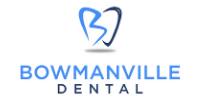The right way to brush your teeth; Do you know how?
Brushing your teeth; it certainly sounds simple! But the fact is, a lot of people are doing it wrong!
Since proper tooth brushing helps to prevent decay and costly tooth problems, and we’re focused on saving teeth, we’re reviewing the right way to brush your teeth. If you are in orthodontic treatment, the advice below is even more important, as orthodontic wires increase chances of food traps, bacteria traps and decay.
So, what is the right way to brush your teeth?
1. Floss first! Flossing is the only way to bring bacteria up from below the gum line and get it brushed away! Your toothbrush can’t get under your gums. Your dentist or dental hygienist can, using their professional tools, but you only see them every 3-6 months depending on your gum condition. In between visits, keep the bacteria out! Floss to bring it up, and then brush to get it out!
We know flossing can be boring, but even if you only floss once per day, you will be doing yourself a big favour! If you don’t floss at all right now, try building up to the habit. Start small with a once per week routine, and slowly building to twice per week, and so on. Hey, even if you can only get to flossing every other day, it will be a huge improvement on bacteria levels in your mouth, and in turn, the health of your beautiful smile. So start today and build a new habit!
2. Brush twice a day, minimum; once upon waking and once before bed. Brushing teeth within an hour of finishing meals is ideal, however if not possible, at least rinse well with water.
3. Brush long enough, but not too long! 30 seconds per “quadrant” is best.
Believe it or not, you can brush your teeth for too long! More commonly, people don’t brush for long enough. Aim for the dentist recommended time of 2 minutes, with an equal 30 seconds in each “quadrant” of your mouth. The visual below helps you see the quadrants in your mouth. You have an upper right and upper left, and a lower right and lower left quadrant. Spend 30 seconds in each one.

Now you may be surprised by how long two minutes can actually feel. The best way to make sure your teeth get their full two-minute brushing to prevent unnecessary cavities and tooth problems, is to use an electric toothbrush with a built-in timer or to count in your head. Remember to give all teeth equal attention and cleaning, so count out 30 second intervals for each quadrant.
4. While you are in each quadrant, remember to brush the “lingual”! Many people brush only the outside or the “buccal” surfaces of their teeth, or the front part of their teeth which are generally in contact with their inner cheeks. Many people don’t realize that the back side of their teeth need just as much cleaning.
Close your mouth for a moment and bite down to close your teeth together. Now run your tongue along the back of your teeth. All those tooth surfaces are known as “lingual” surfaces, or the back side of your teeth, and many people have plaque & bacteria build up or tender gums and bad breath, because they don’t brush equally along these lingual surfaces. Be sure to do front or “buccal” and the back or “lingual” of teeth in every quadrant!
5. Be gentle. To brush your teeth the right way, you want to be thorough, but gentle. If you are brushing for 30 seconds in each quadrant, and a total of 2 minutes, you are thorough, and there is no need to be harsh on your teeth.
Using too much pressure when you brush, can actually damage the enamel which surrounds and protects your teeth from bacteria. Also, the enamel is actually the whitest part of your tooth and damaging it can make your teeth appear more yellow or grey.
Brush in small concentric circles, gently. That is all that is required to remove plaque bacteria and stains. Electric toothbrushes can help, as many are equipped with a pressure sensor, which triggers a warning light when you press too hard on your teeth. If you are using a manual toothbrush, try the two-finger method to brushing gently. Instead of holding your toothbrush with your entire hand, or a clenched fist, try holding your toothbrush with your thumb and two fingers only. You will naturally use less pressure on your teeth when holding your toothbrush this way.
6. Rinse your mouth and rinse your brush! Rinsing is a really important step, and a lot of people don’t do it.
The reason rinsing is so important, is that it gets rid of particles of food that have become dislodged as you brush and floss. Plaque bacteria thrive on these food particles. If you leave them in your mouth, or on your brush, you’re exposing your teeth to more plaque bacteria than necessary. After brushing, give your mouth a good rinse with clean, cold water. Rinse your toothbrush after use as well.
7. Let your toothbrush dry. A moist toothbrush that isn’t allowed to air dry can breed bacteria. Store toothbrushes in a way that allows them to air dry naturally and not stay moist until the next use.
So now we’ve reviewed the right way to brush your teeth. Some of these steps may be new to you, so give yourself time to develop new, positive habits. Remember, correct tooth brushing helps reduce costly and invasive dental treatment.
If you have any questions about your dental routine or dental care, please call us at 905.697.9799 or send us an email today.
